Yves here. I never got “duck and cover” training in school, but there were enough designated fallout shelters with their yellow and black logos to stoke Cold War doomsday fears.
By Skip Kaltenheuser. Originally published at DownWithTyranny!
Tick Tock. The good folks at the Bulletin of Atomic Scientistshave returned to wind their Doomsday Clock. Last Thursday at the National Press Club a group of well-credentialed speakers, including former California Governor Jerry Brown and former Secretary of Defense William Perry, underscored the organization’s warning that we have established residence in “the new abnormal.” Watch the press conference and supportive videos here.
The Doomsday Clock was set last year at a two-minutes until midnight, (midnight being the endgame), and there it now remains. There’s little comfort to be had in standing on what University of Chicago astrophysicist Robert Rosner characterized as a precipice we’d best quickly leap back from. Bulletin president and CEO Rachel Bronson stressed that the clock remaining where it is, the closest it has been to world catastrophe, is not stability, but “a stark warning to leaders and citizens around the world.”
William Perry said the organization views our current situation as precarious as it was in 1953, in the gloom of the Cold War while the Korean War still raged. Jerry Brown said, “The blindness and stupidity of the politicians and their consultants is truly shocking in the face of nuclear catastrophe and danger….the business of everyday politics blinds people to the risk, we’re playing Russian Roulette with humanity,” with the danger of an incident that will kill millions if not igniting a conflict that will kill billions.
Brown told journalists while they may love the Trump tweets and news of the day, “the leads that get the clicks,” the final click could be a nuclear accident, a mistake. “It’s hard to even feel or sense the peril and danger we are in, but these scientists know what they’re talking about, and I can say, based on my understanding of the political process, the politicians, for the most part, do not.” Referring to Congress’s inaction on related matters, Brown called it “massive sleep walking all over the place.” He committed to spending the next few years doing everything he can to “sound the alarm and get us back on the track to dialogue, collaboration and arms control.”
The Bulletin of Atomic Scientists and the Doomsday Clock are creations of a group of scientists who participated in the Manhattan Project. The clock’s current position was determined by a group of scholars and scientists that includes fifteen Nobel Laureates. These are serious people. It is heartening to see their avoidance of political talking points or partisan tilt in favor of Joe Friday’s focus on “just the facts, ma’am.” Just the chilling facts that let the chips fall where they may. About thirty-three minutes into the conference Jerry Brown gave a Dutch uncle talk to Democrats who maintain the attack mode on Putin on all matters without holding open the option for nuclear dialogue. It brought to mind the discussions of Washington’s bipartisan War Party prompted by William Atkin’s recent critique of NBC and MSNBC.
The Bulletin has been criticized for going beyond the original nuclear realm to include a number of other perils. But it seems if there is one thing we’re learning now from climate and polar ice studies and being slapped around by extreme weather events, it’s that seemingly unrelated factors cascade and overlap, interacting and accelerating in ways we hadn’t understood. No doubt more surprises will come. Certainly the impacts of climate change on food and water supplies, on ocean health and on migration will bear on political systems and on future tensions and conflicts. Perhaps it is too far afield, but a case could be made to include prospects of financial meltdowns from bankers behaving badly. Economic calamities have lit a lot of fuses throughout history.
Stanford cyber expert Herb Lin focused on the ongoing debasement of institutions that hold leaders accountable. While nuclear risks and climate change lead the concerns, that witches brew is now put into the blender by the misinformation on steroids enabled by the Internet. Says Lin, “Events in 2018 have helped us to better understand an ongoing and intentional corruption of the information environment. Our leaders complain about fake news and invoke alternative facts when reality is inconvenient. They are shamelessly inconsistent.”
So we have Information warfare combining with information overload to compromise the public’s ability to absorb and analyze critical issues. Among other things, information warfare delegitimizes the values and truths embodied by science, causing a cheapening and distrust of all information, opening a Pandora’s Box of distortions that allow the public and politicians to avoid grappling with the serious issues before them.
Fine by me if the experiences of the past few years inoculate the public with a healthy cynicism, offering some protection from the gatling guns spewing talking points. But if the public discards the legitimacy of scientific thought and proof, not so good.
Here’s a few excerpts from The Bulletin statement on the Doomsday Clock:
Humanity now faces two simultaneous existential threats, either of which would be cause for extreme concern and immediate attention. These major threats– nuclear weapons and climate change– were exacerbated this past year by the increased use of information warfare to undermine democracy around the world, amplifying risk from these and other threats and putting the future of civilization in extraordinary danger.
In the nuclear realm, the United States abandoned the Iran nuclear deal and announced it would withdraw from the Intermediate-range Nuclear Forces Treaty (INF), grave steps towards a complete dismantlement of the global arms control process. Although the United States and North Korea moved away from the bellicose rhetoric of 2017, the urgent North Korean nuclear dilemma remains unresolved. Meanwhile, the world’s nuclear nations proceeded with programs of “nuclear modernization” that are all but indistinguishable from a worldwide arms race, and the military doctrines of Russia and the United States have increasingly eroded the long-held taboo against the use of nuclear weapons.
On the climate change front, global carbon dioxide emissions– which seemed to plateau earlier this decade– resumed an upward climb in 2017 and 2018. To halt the worst effects of climate change, the countries of the world must cut net worldwide carbon dioxide emissions to zero by well before the end of the century. By such a measure, the world community failed dismally last year. At the same time, the main global accord on addressing climate change– the 2015 Paris agreement– has become increasingly beleaguered.The United States announced it will withdraw from that pact, and at the December climate summit in Poland, the United States allied itself with Russia, Saudi Arabia, and Kuwait (all major petroleum-producing countries) to undercut an expert report on climate change impacts that the Paris climate conference had itself commissioned.
Amid these unfortunate nuclear and climate developments, there was a rise during the last year in the intentional corruption of the information ecosystem on which modern civilization depends. In many forums, including particularly social media, nationalist leaders and their surrogates lied shamelessly, insisting that their lies were truth, and the truth “fake news.” These intentional attempts to distort reality exaggerate social divisions, undermine trust in science, and diminish confidence in elections and democratic institutions. Because these distortions attack the rational discourse required for solving the complex problems facing humanity, cyber-enabled information warfare aggravates other major global dangers– including those posed by nuclear weapons and climate change– as it undermines civilization generally.
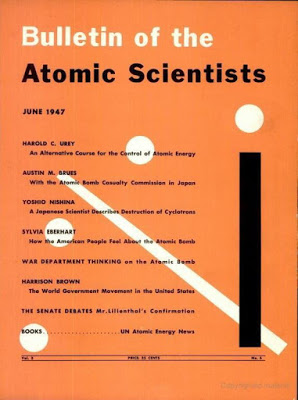
First clock, 1947
Worrisome nuclear trends continue. The global nuclear order has been deteriorating for many years, and 2018 was no exception to this trend. Relations between the United States and both Russia and China have grown more fraught. The architecture of nuclear arms control built up over half a century continues to decay, while the process of negotiating reductions in nuclear weapons and fissile material stockpiles is moribund. The nuclear-armed states remain committed to their arsenals, are determined to modernize their capabilities, and have increasingly espoused doctrines that envision nuclear use. Brash leaders, intense diplomatic disputes, and regional instabilities combine to create an international context in which nuclear dangers are all too real
A number of negative developments colored the nuclear story in 2018.
First, the United States abandoned the Joint Comprehensive Plan of Action, the multilateral agreement that imposed unprecedented constraints on Iran’s nuclear program and allowed unprecedented verification of Iran’s nuclear facilities and activities. On May 8, President Trump announced that the United States would cease to observe the agreement and would instead launch a campaign of “maximum pressure” against Iran. So far, Iran and the other parties have continued to comply with the agreement, despite the absence of US participation. It is unclear whether they will keep the agreement alive, but one thing is certain: The Trump administration has launched an assault on one of the major nuclear nonproliferation successes of recent years and done so in a way that increases the likelihood of conflict with Iran and further heightens tensions with long-term allies.
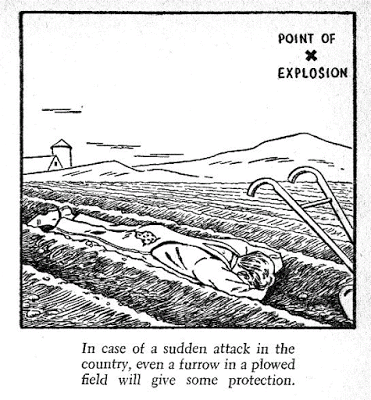
Second, in October the Trump administration announced that it intends to withdraw from the INF Treaty, which bans missiles of intermediate range. Though bedeviled by reciprocal complaints about compliance, the INF agreement has been in force for more than 30 years and has contributed to stability in Europe. Its potential death foreshadows a new competition to deploy weapons long banned. Unfortunately, while treaties are being eliminated, there is no process in place that will create a new regime of negotiated constraints on nuclear behavior. For the first time since the 1980s, it appears the world is headed into an unregulated nuclear environment– an outcome that could reproduce the intense arms racing that was the hallmark of the early, unregulated decades of the nuclear age.

…even as arms control efforts wane, modernization of nuclear forces around the world continues apace. In his Presidential Address to the Federal Assembly on March 1, Russian President Vladimir Putin described an extensive nuclear modernization program, justified as a response to US missile defense efforts. The Trump administration has added to the enormously expensive comprehensive nuclear modernization program it inherited from the Obama administration.
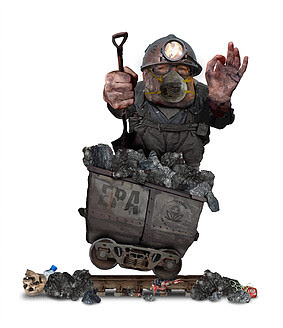
Andrew Wheeler by Nancy Ohanian
Ominous climate change trends. The existential threat from human-caused global warming is ominous and getting worse. Every year that human activities continue to add carbon dioxide to the atmosphere irreversibly ratchets up the future level of human suffering and ecosystem destruction that will be wrought by global climate disruption. The key measure of improvement on the climate front is the extent of progress toward bringing global net carbon dioxide emissions to zero. On this measure, the countries of the world have failed dismally.
Global carbon dioxide emissions rates had been rising exponentially until 2012 but ceased growing from 2013 to 2016. Even if this emissions plateau had continued, it would not have halted the growth of warming. Net emissions need to ultimately be brought to zero to do so, given the persistence of carbon dioxide in the atmosphere for up to thousands of years. The ominous news from 2017 and 2018 is that world emissions appear to have resumed their upward climb.
Even nations that have strongly supported the need to decarbonize are not doing enough. Preliminary estimates show that almost all countries contributed to the rise in emissions. Some countries, including the United States and some members of the EU, increased their emissions after years of making progress in reducing them.
The United States has also abandoned its responsibilities to lead the world decarbonization effort. The United States has more resources than poorer nations have; its failure to ambitiously reduce emissions represents an act of gross negligence. The United States stood alone while the other G20 countries signed on to a portion of a joint statement reaffirming their commitment to tackle climate change. Then in 2018, at the United Nations Climate Change Conference in Poland, the United States joined with Russia, Saudi Arabia, and Kuwait– all major oil producers– to undercut a report on the impacts of climate change.

Freedom of the Press, Money and the Media by Nancy Ohanian
The threat of information warfare and other disruptive technologies. Nuclear war and climate change threaten the physical infrastructure that provides the food, energy, and other necessities required for human life. But to thrive, prosper, and advance, people also need reliable information about their world– factual information, in abundance.
Today, however, chaos reigns in much of the information ecosystem on which modern civilization depends. In many forums for political and societal discourse, we now see national leaders shouting about fake news, by which they mean information they do not like. These same leaders lie shamelessly, calling their lies truth. Acting across national boundaries, these leaders and their surrogates exacerbate existing divisions, creating rage and increasing distrust in public and private institutions. Using unsupported anecdotes and sketchy rhetoric, denialists raise fear and doubt regarding well-established science about climate change and other urgent issues. Established institutions of the government, journalism, and education– institutions that have traditionally provided stability– are under attack precisely because they have provided stability.
In this environment, communication inflames passions rather than informing reason.
Many countries have long employed propaganda and lies– otherwise known as information warfare– to advance their interests. But a quantitative change of sufficient magnitude qualifies as a qualitative change. In the Internet age, the volume and velocity of information has increased by orders of magnitude. Modern information technology and social media allow users easy connectivity and high degrees of anonymity across national borders. This widespread, inexpensive access to worldwide audiences has allowed practitioners of information warfare to broadcast false and manipulative messages to large populations at low cost, and at the same time to tailor political messages to narrow interest groups.
By manipulating the natural cognitive predispositions of human beings, information warriors can exacerbate prejudices, biases, and ideological differences. They can invoke “alternative facts” to advance political positions based on outright falsehoods. Rather than a cyber Armageddon that causes financial meltdown or nationwide electrical blackouts, this is the more insidious use of cyber tools to target and exploit human insecurities and vulnerabilities, eroding the trust and cohesion on which civilized societies rely.
The Enlightenment sought to establish reason as the foundational pillar of civilized discourse. In this conception, logical argument matters, and the truth of a statement is tested by examination of values, assumptions, and facts, not by how many people believe it. Cyber-enabled information warfare threatens to replace these pillars of logic and truth with fantasy and rage. If unchecked, such distortion will undermine the world’s ability to acknowledge and address the urgent threats posed by nuclear weapons and climate change and will increase the potential for an end to civilization as we know it. The international community should begin multilateral discussions that aim to discourage cyber-enabled information warfare and to buttress institutions dedicated to rational, fact- based discourse and governance.
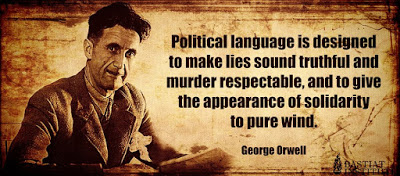
Particularly regarding the 2016 election, Russia and fake news have become inseparable to many. My lingering view remains that any impact from Internet mischief the Russians did during elections was a blip next to all the rot that’s been flying about for years, much of it funded by homegrown dark money and most of it owing to good old-fashioned American lack of integrity. On the other hand, I don’t have a cell phone, am not on cable and have never been on Facebook, so maybe I’m just clueless about how easily people are significantly swayed by a select few of the gazillion bits of information firehosing them, even those bits that people happily cobble into personal echo-chambers. But it seems that folks who are birthers and such don’t have to depend on the far flung for nonsense readily available and riding down a hotel escalator. The American realm of carefully calculated election misinformation from incognito sources is wonderfully underscored by the POV film Dark Money. It shows how dark money, ramped up by Citizens United, distorted elections in Montana, targeting both Democrats and Republicans who didn’t do a sufficient kowtow to the big money. Not to Putin’s druthers, but to the big money, to polluters, Koch brothers allies, ALEC objectives and such. But I digress, because that’s the beauty of a blog post.
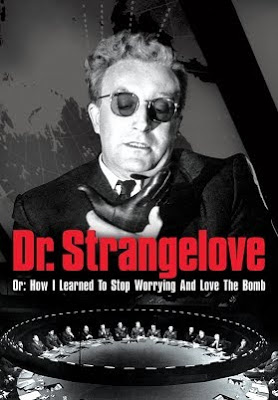
Back to bombs. According to the Federation of American Scientists, nine nations together have about 15,000 nuclear bombs, most far more powerful than those used on Japan, 1,800 of those possessed by the US and Russia are kept on high-alert status. Ride along with Major Kong here, and sing along with Vera Lynn here on “We’ll Meet Again,” as humanity exits stage left. Here’s a version picking some of the 331 atmospheric tests the US conducted from 1945 to 1962. Try the comfort of the largest bomb exploded, the Tsar Bomba, aka Ivan, aka Vanya, here. If you’d like to explore the impacts of a single one megaton bomb, (eighty times larger than the Hiroshima bomb but tiny compared to some modern bombs), as well as the global impacts of an exchange of 100 Hiroshima-sized bombs, perhaps a conflict between Pakistan and India, here you go. Perhaps pass these along to George W. Bush so he has a better idea of how to look for a WMD, maybe at a correspondents dinner.
By the way, do you think kids in the Fifties might have had a few issues to work out later?
Actions and statements by Trump figure significantly in the clock’s advancement in 2017 to two and a half minutes before midnight. A then-incoming President Trump made alarming statements regarding nuclear proliferation, the prospect of using nuclear weapons and his opposition to US commitments on climate change. And in 2018 he helped move the clock ahead thirty seconds with actions like pulling out of the Iran agreement. By the way, that idiocy is greased by nuclear power Israel, Sheldon Adelson and their American neocon minions like John Bolton. Invading Iraq wasn’t enough horror.
Trump also announced his intent to scrap the Intermediate-Range Nuclear Forces Treaty (INF) that for decades was a lynchpin for global arms control.
I do wish Trump luck for a good follow-through with North Korea that might relax the minute hand a bit. The world needs a win.
Trump recently reincarnated the illusion of a global defense system. A worthy critique by Joe Cirincione, president of the Ploughshares Fund, is his essay Donald Trump’s Mission Impossible: Making His Unrealistic Missile Plan Work, is here.
That man behind the curtain has nothing on Trump. Now we have the news of Trump’s latest misdirection, Venezuela. In 1975 I traveled overland to South America. Two impressions of Venezuela linger, the startling transition over a few hours going from snow in the Andes to the streamy tropics below, and the surreal feel while waterskiing between the oil derricks in Lake Maracaibo. Like slicks on the water, oil money was everywhere, a pleasant-looking lifestyle for many of the privileged youths darting about in convertibles filled with cheap gas. I can’t grasp the changes since then. Whatever way out of the miseries of a failed state might be found, it’s hard to imagine lighting the fuse for a civil war would prove beneficial. Perhaps Venezuelans will come knocking seeking asylum, quoting Trump’s description of their plight, never mind contributing US pressures. In any case, Venezuela should give us pause at how fast things can change.
Tick Tock.



“a quantitative change of sufficient magnitude qualifies as a qualitative change”
An excellent turn of phrase that I will be using in the future, precarious as it may be. Not sure what else to say about this article. We are where we are.
+1
quantity has a quality all its own?
If/when you repeat it say constitutes a qualitative change…., I stumbled a bit on that one, too many english classes I guess, and while I’m grousing about lingo I’m with NTG, alot is spelled a lot.
That said, I thought it was a good read and am looking forward to others opinions about it. Jerry Brown lecturing about “those politicians” is really something. As with Kamala Harris, the average left/liberal californian has a giant carbon footprint. One can commute by cycle to almost any part of seattle, I did it for many many many years, but in san diego it’s too sprawled out, the freeways make it really easy to cover large areas quickly and the urban suburban developments reflect that. From my mom’s house the closest bus stop is 3 miles away, largely imo due to racism, you want your latin worker to be there in the daytime but not at night, busses bring in the rabble. Seattle on the other hand has great regional transport, we took a hit like everyone else after ’08 and some of the better routes got axed (notably the 7x from rainier valley) but there is light rail which theoretically replaced that line, and now we have the red buses A,B,C…etc that are step up. The author also put obama at least in the arena where he belongs as the one who funded the “conventional nukes” thing, and now trump has it, and there’s 50 billion a year that congress can rubber stamp without concerning themselves regarding “how you gonna’ pay for that?”, the giant space war facility in san diego probably bought everyone an extra box of donuts after that tag team takedown. Also silicon valley, which I believe is in california, and tech in general are big on defense contracts also, I’m sure musk and bezos, respectively, want to own privatized nasa for instance, and if your shooting off rockets you need payload, and gaining efficiency through disruption, well that goes without saying. So, as you (integer) state, here we are and it’s not looking very promising that the elite in the us have the capacity to change for the better without having change forced upon them which will almost certainly be bad for all of us.
Two of my bugbears also.
One of the key tenets of Hegelian/Marxist dialectics.
I’m old so help me. Did I get up on the wrong side of the bed this morning because instead of making me feel like I should cower in fear due to the moving of the clock, I laughed to myself as I read this article.
Tell me when the United States has ever let a treaty hold it back from an action when it is to the advantage of our country? Ask any of your native friends about that. The only difference with Trump is he is blunt and open about what he is doing instead of using propaganda and diplomacy to cover his tracks.
And fracking friend Jerry Brown and NATO to Russia’s border William Perry as spokespeople?
Okay. I’ll go back to gumming my oatmeal now that I’ve ventilated.
The Bulletin has even worse people on its board: death squad maven Thomas Pickering and ‘author’ Priscilla Johnson McMillan!
When it was a paper magazine it was genuinely useful – now it has retreated behind an academic paywall and the general reader is limited to shorter, simpler pieces and ‘executive summaries.’
Since much of the information therein is valuable, the paywall is a real shame.
i’ve always figured we’d get to nuclear winter before anything like catastrophic global warming set in…
Interesting coupling:
After listening to the RealNews interviews with Daniel Ellsberg several times [still need to order Elsberg’s book — ugh!] I am underwhelmed by today’s post. Unless you disbelieve that hydrogen bombs can put dust into the high atmosphere leading to Nuclear Winter, the Doomsday Clock should have been sitting at two-minutes until midnight since sometime in the 1950s. Since that time, there have been many times more than enough nuclear weapons to turn our planet into dead rock, there have been insane policies and strategies guiding the use of nuclear weapons, and a very large number of ‘players’ could initiate a nuclear attack — not just a world leader, and not just a very high general. I recall a comment Ellsberg made in one of his interviews — after watching the just released “Dr. Strangelove” with some colleagues they all agreed the film was documentary, NOT comedy. Ellsberg even identified who some of the characters were modeled on: Gen. Turgidson, the character George C. Scott played, was Gen. Curtis LeMay, and Gen. Ripper was Gen. Thomas S. Power. “When General LeMay was named vice chief of staff of the Air Force in 1957, Power became commander in chief of SAC and was promoted to four-star rank.” [https://en.wikipedia.org/wiki/Thomas_S._Power]
Ellsberg said those who worked for Gen. LeMay, who executed the fire bombing of Tokyo among other things, characterized him a sadist. Those who worked for Gen. Ripper, who was commander in chief of the Strategic Air Command, characterized him as insane. A story Ellsberg repeats in interviews: “When RAND proposed a counterforce strategy, which would require SAC to restrain itself from striking Soviet cities at the beginning of a war, Power countered with:
Restraint? Why are you so concerned with saving their lives? The whole idea is to kill the bastards. At the end of the war if there are two Americans and one Russian left alive, we win!”
[also from https://en.wikipedia.org/wiki/Thomas_S._Power%5D
Nuclear Winter.
It is fashionable to think of Nukes as the tools of our destruction for all mankind. Ironic in this age that fossil fuels and cow farts are more likely to wipe out homo sapiens.
So it seems that what we need is something to really chill our atmosphere – you know, like a Nuclear Winter? Yet, I have not read a single article suggesting, much less investigating, how a strategic nuclear explosion might heal our atmosphere rather than annihilate us.
” I have not read a single article ….” Try harder!
“First sun-dimming experiment will test a way to cool Earth”, Nature. 27 November 2018 , [https://www.nature.com/articles/d41586-018-07533-4].
It’s not a big jump to try a nuclear explosion after a year or two of preliminary testing like the Stratospheric Controlled Perturbation Experiment (SCoPEx) described in the Nature article, although using nuclear explosions to achieve cooling seems a little showy and more than a little overkill. I must admit if we simply must do ourselves and the rest of planet in we might as well go out with a bang.
Actually the SCoPEx effort is a follow on to the ill-fated Stratospheric Particle Injection for Climate Engineering (SPICE) project. [“Geoengineering experiment cancelled amid patent row”, Nature, 15 May 2012, https://www.nature.com/news/geoengineering-experiment-cancelled-amid-patent-row-1.10645%5D.
Using nuclear weapons to trigger a ‘controlled’ Nuclear Winter for dealing with Climate Chaos would definitely ‘work’ but at this point that ‘solution’ is growing a little long in the tooth. I think we need to be more creative! I’m certain there’s some much more exciting and innovative way to end life on our planet … you know … some truly ‘disruptive’ new technology we can try. There’s nothing to lose in trying since we already have so many ready means standing by that we could fall back on should things go wobbly and we need to make a clean end of it.
“At the end of the war if there are two Americans and one Russian left alive, we win!”
Gee, who would want to argue with such logic !
At the end of the war if there are two Americans and one Russian left alive, we win!”
only if one of them is a female of breeding age and capable of…
There was a TV series called “The Last Ship” based on a book of the same name. In the novel, the crew of the USS Nathan James combine with a Russian ship called the Pushkin and the survivors of an island community the Americans accidentally destroyed to go to McMurdo Station to found a new colony. Unfortunately due to the radiation of the nuclear winter the American crew is sterile so it is up to the Russian crew to continue the human race-
https://en.wikipedia.org/wiki/The_Last_Ship_(novel)
“Jerry Brown said, “The blindness and stupidity of the politicians and their consultants is truly shocking in the face of nuclear catastrophe and danger…”
Let us know when he has repudiated the pro-war “Let’s Keep Fighting The Russians In Syria”
wing of his party.
I would put more stock in what Rep. Barbara Lee has to say; She was the ONLY house member to vote against authorizing the invasion of Iraq.
Trump’s ‘defense’ budget, with all the add ons?
Not one Democratic Senator voted against it, including Kamala Harris, “Mizzz Resistance.”
Indeed, Barbara Lee’s nay vote was excellent, not certain she was the only one to do so. Here’s an old graph, which might be right.
Party Ayes Nays Not
Voting
Republican 215 6 2
Democratic 82 126 1
Independent 0 1 0
TOTALS 297 133 3
Barbara Lee was the only one to vote against the October 2001 Authorization to Use Military Force Against Terrorists, not to be confused with the 2002 Iraq War AUMF. She wisely saw the 2001 AUMF as a blank check for war without public debate.
https://www.thenation.com/article/16-years-ago-barbara-lees-warning-against-the-aumf-was-ignored-nevertheless-she-persisted/
We were warned…
https://youtu.be/oj1wLl3R2XE?t=848
If Change is War, then we are facing a doomsday as if it were nuclear. Except for the nuclear winter and death by radiation poisoning and/or starvation. The Doomsday we face is climate change and peak oil which are ironically coinciding just for our entertainment. Obviously the less oil left the more of it is polluting the environment. I’m sure the smartest among us, the Exxons, etc. knew we were going to be hit from both sides but we environmentalists only saw the pollution and inequality. It’s so much worse. It’s not like there’s plenty of oil/energy we can use to fix our lifestyle and clean up and reset the environment, and we still have time to reduce our population so there’s enough food to go around… No. Those opportunities were lost along the way. Absolute seriousness is what we need. And leadership. It’s the leadership I’m most worried about. Those clowns.
We have no leadership ! We have political highschoolers who nerver realy grew up instead.
Meanwhile, at MSNBC:
https://www.youtube.com/watch?v=khvbkz4Qz3o
The comments are…great.
It is simultaneously amusing and depressing to read comments sections like that. The sad part is that many of the people leaving those sorts of comments appear to be under the impression that echoing establishment talking points and asking anyone who doesn’t agree with them how the weather is in Moscow qualifies them as fiercely independent thinkers.
And some people call LiveLeak a cesspool of humanity!
I will note one thing however. The US accused Russia of being in violation and demanded that they turn over an example of that suspect missile, a copy of the blueprints and all their test data on it to determine if that missile was in fact in violation of the treaty. Sounds a legit demand that. Before they broke with the treaty, the US just manufactured a new type of nuke that would have been in volition of the treaty which means that this had been years in preparation in order to have an assembly line set up. The place is in Tucson, Arizona and the Russians have just released an image of this facility to show the setup there-
https://sputniknews.com/us/201902021072066039-satellite-images-inf/
I missed something!
I scanned the comments at your link and didn’t spot the ‘great’ part. Instead I left the comments reminded of a statement Chomsky made in one of his most recent speeches — he is amazed at how little concern people have about the horrific nuclear doomsday machine looming over them.
What a magical combination – Kaltenheuser’s words and Ohanian’s illustrations – wow!
We have failed to restrain ourselves. We can see the trend of events but justify going on regardless as its just conceivable that it will be different this time and, always, our unanswerable point is our financial / economic requirements need us to do it.
None of the stories I’ve read covering the renewed push for tactical nukes even raise the question of their environmental impact. That’s scary.
South Park had the idea about the usefulness of the Duck and Cover ploy sussed out-
https://www.youtube.com/watch?v=v6prK716ssM
Of course that did not work out so well in practice-
https://www.youtube.com/watch?v=_6ZFkmloarg
With all those nuclear weapons that were tested out in the atmosphere for decades, did you ever wonder what aliens might think about it all?
https://www.youtube.com/watch?v=bPBzj90Su8A
So, we have Trumps political ‘indiscretions’, ALEC, and the KOCK bros …. but nothing regarding the feckless Democrats !! Are the above problematic .. ?? Yes, most certainly ! But to not place blame as well on the other half of the American Duopoly is a disservice to the gist of the article. I would also blame the larger science community for not practicing what they preach with regard to lowering THEIR carbon footprint .. like, you know .. by leading by example !!!
Otherwise, I would agree with the post : that things are dire, and an honest discussion needs to take place, in this country and elsewhere, about ways to dial-down the nuclear roulette threat, and find realistic solutions to the degradation of the planet, brought about by human ‘progress’ and greed.